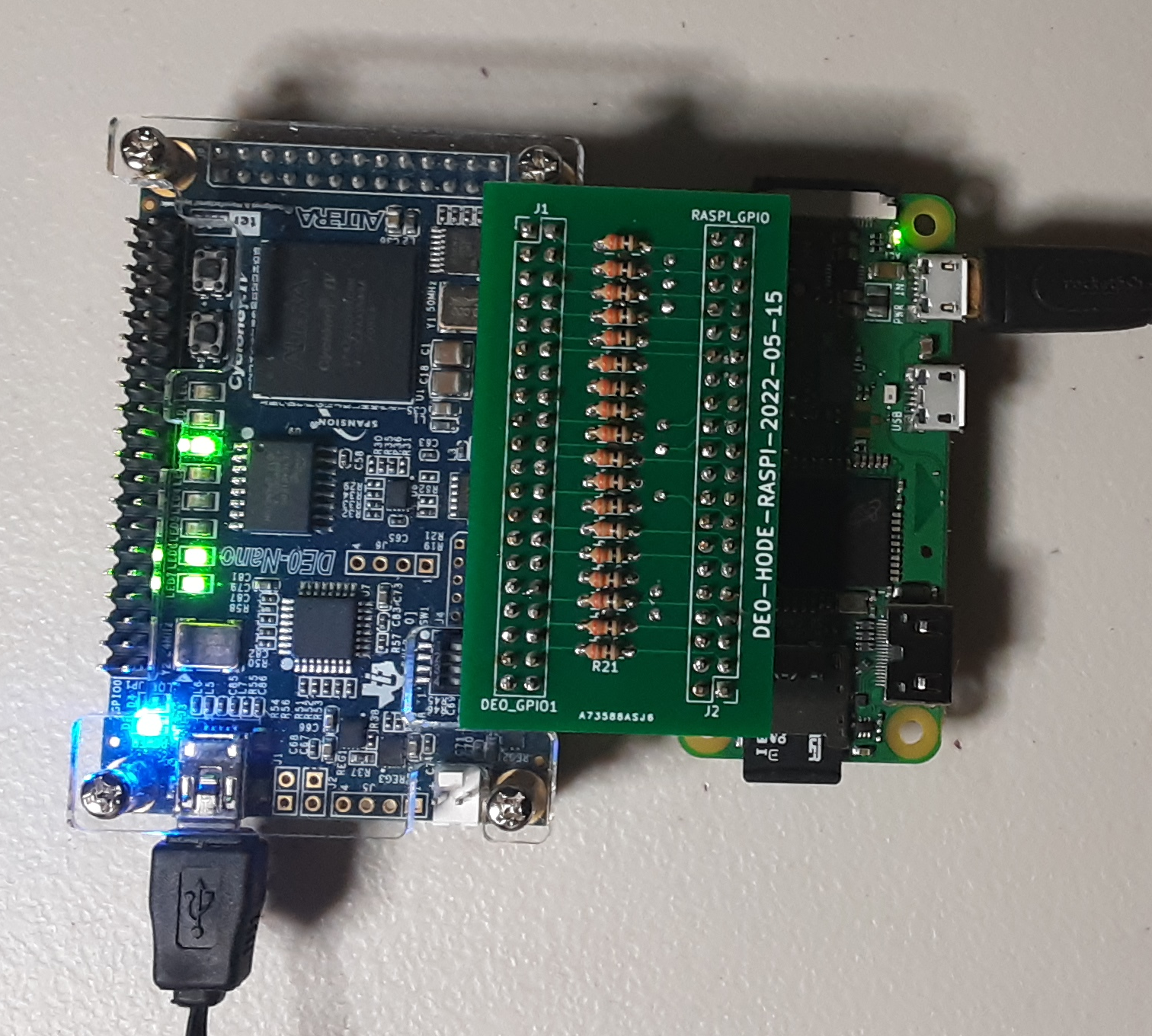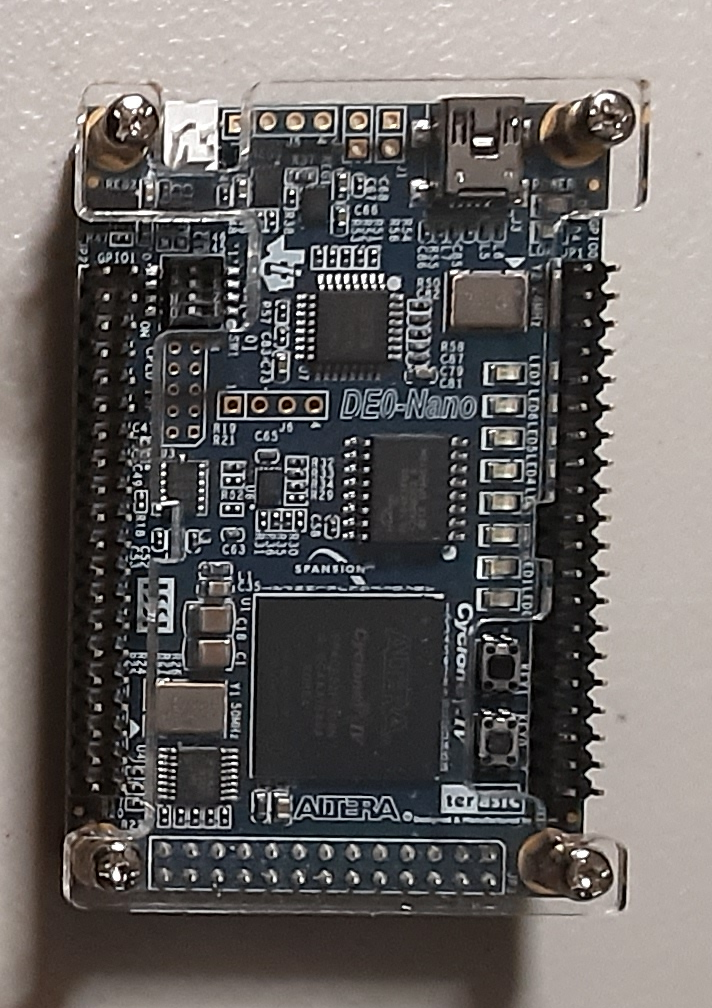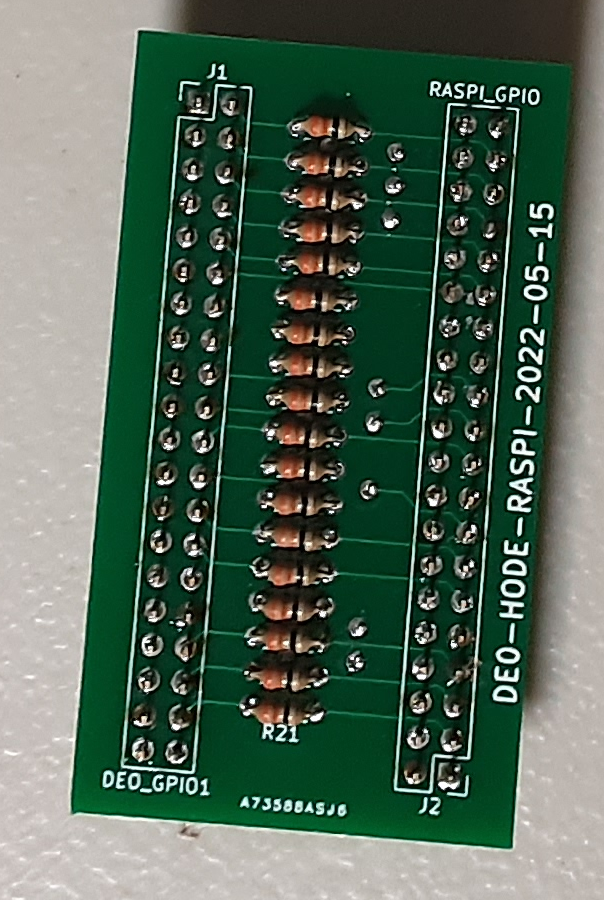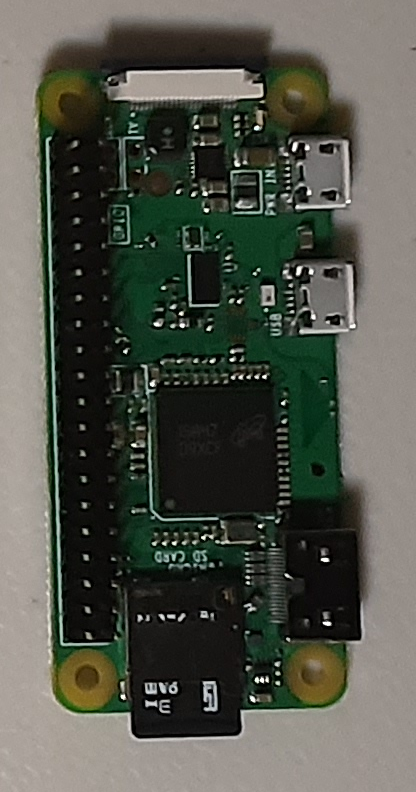

 |
The HODE CPU can be programmed into an FPGA such as the DE0 Nano. The DE0 Nano has more than enough GPIO pins to connect one-to-one to all the necessary Raspberry PI GPIO pins. All that remains is to make an interconnect between the Raspberry PI GPIO pins and one bank of the DE0 Nano GPIO pins. |
  |
To make the interconnection, a simple PCB was made that has two
2x20 standard header-style connectors. Fortunately, the DE0 Nano
can be programmed to use 3.3V on its GPIO pins so it is compatible
with the Raspi GPIO pins. However, 33Ω resistors are needed
on the connecting lines (except for the ground connections) so the
signals won't bounce (otherwise you might get a double-clocking).
Interesting note: The interconnection board isn't Hode specific as such, it can be used for other projects requiring up to 26 directly connected GPIO lines between a Raspi and a DE0 Nano. |
 |
The same software runs on the Raspi as is used for the 'real' transistor implementation. All that is different is you can use a -cpuhz 0 option to tell the Raspi control program to run as fast as it can because the FPGA can handle any speed the Raspi tries to push out. |
| Short Video of it running the rollights.hex demo program (the LEDs are 'wired' to show the low 8 bits of the ALU output) |